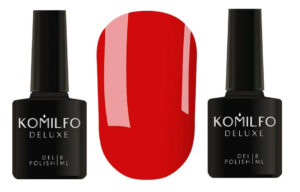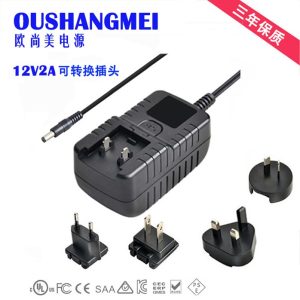Creative Writing and Essay Writing: How To Make Your Argument Captivating
6 min read
Hispanic teen girl college student study from home office making notes doing homework in sunny room. Latin smart teenage school pupil learning online on laptop sit at desk. Distance elearning concept.
Last Updated on June 11, 2023 by Jonathan Lopez
Capturing your reader’s attention can be quite a challenge when it comes to writing persuasive essays or creative pieces. In this article, we will explore how creative writing and essay writing are surprisingly connected, and what steps you can take in order to make sure that your argument is captivating and engaging for your readers.
Introduction to Creative Writing and Essay Writing
There are two types of writing that are commonly confused: creative writing and essay writing service. Although they share some similarities, they are actually quite different.
Creative writing is all about self-expression and conveying your ideas in an interesting and unique way. It can be used to write stories, poems, or even songs. On the other hand, essay writing is a more formal and analytical type of writing. It is used to present arguments and to persuade the reader to see your point of view.
So, how can you make sure that your argument is captivating regardless of which type of writing you are using? Here are some tips:
- Use strong language that packs a punch.
- Be clear and concise in your argument.
- Engage the reader by making your argument relatable.
- Use persuasive techniques such as emotional appeals and logic to convince the reader to see your side.
- Write creatively! Even if you are writing an essay, there is no reason why you can’t add a bit of flair to make it more interesting.
Elements of Creative Writing
creative writing and essay writing are two very different genres.
Creative writing is all about engaging the reader’s imagination and emotions, whereas essay writing is more focused on conveying information in a clear and concise manner. In order to make your argument captivating, you need to find a way to blend these two genres together.
One way to do this is to start off with a bang. Your opening paragraph should be attention-grabbing and give the reader a taste of what’s to come. If you’re writing about a controversial topic, you could try using shock value or humor to get the reader’s attention.
Once you have the reader’s attention, it’s important to keep them engaged by making your argument compelling. To do this, you’ll need to use strong language and vivid imagery. Make sure every sentence counts and that your argument flows smoothly from one point to the next.
Finally, don’t forget to end on a strong note. Sum up your argument in a way that will leave the reader thinking long after they’ve finished reading. If you can do all of this, then you’ll be well on your way to writing an argument that is both captivating and convincing.
How to Use Creative Writing in an Essay
It is no secret that writing an essay can be a daunting task. There are so many things to keep in mind: the structure, the argument, the evidence, and the style. However, one of the most important aspects of writing an essay is making your argument captivating. After all, what good is an essay if no one wants to read it?
One way to make your argument more captivating is to use creative writing in your essay. This doesn’t mean that you should forsake all rules of grammar and punctuation; rather, you should use your creativity to enhance your argument and make it more interesting for your reader.
Here are some ways to do this:
1. Use strong imagery.
When you paint a picture with words, it allows your reader to better understand and visualize your argument. Be specific in your descriptions, and don’t be afraid to use metaphors and similes to add color to your writing.
2. Write with emotion.
Your readers will be more engaged if they can feel your passion for the subject matter. Let your emotions show through in your writing, and don’t be afraid to share personal stories that illustrate why this issue is important to you.
3. Use creative storytelling techniques.
Weaving a story into your essay can help make complex arguments more understandable and relatable for your reader.
Ways to Make Your Argument Captivating
There are a few key things to keep in mind when you’re crafting an argumentative essay: your argument should be clear, concise, and supported by evidence. However, making your argument captivating goes beyond just the bare bones of the essay itself. Here are a few ways to make sure your argument is as captivating as possible:
1) Choose a controversial or interesting topic. If you’re passionate about your subject matter, that will come across in your writing and make your argument all the more compelling. Make sure to select a topic that you know you can argue effectively for – this will make the writing process much easier.
2) Use strong language. Be assertive in your claims and use persuasive language throughout your essay. This doesn’t mean being rude or aggressive, but rather using language that will resonate with your reader and convince them of your point of view.
3) Structure your essay well. A well-organized essay is easier to follow and makes for a more convincing argument. Be sure to include an introduction, body paragraphs that each focus on one main point, and a conclusion that wraps up your overall argument.
4) Support your claims with evidence. In order for your argument to be truly convincing, you need to back it up with concrete evidence. This could include statistics, expert opinions, real-life examples, etc. Whatever type of evidence you choose to use, make sure it is relevant and persuasive.
Examples of Successful Arguments
In order to make your argument captivating, you need to provide concrete examples of your claims. Below are some examples of successful arguments:
-I believe that video games can be used as a tool for learning. Games like ‘Civilization’ and ‘Europa Universalis’ offer players an opportunity to engage with complex systems and make decisions that have real world consequences.
-I think that the way we currently approach education is flawed and in need of reform. The current system often relies on standardized tests which only measure a narrow range of skills. We should instead be focusing on creativity, critical thinking, and problem solving.
-I argue that our society is too reliant on technology and this is having a negative impact on our ability to interact with each other and the world around us. We need to find a balance between using technology and living in the moment.
Tips on Using Creative Language in an Academic Argument
Creative language can be a great way to make your argument more captivating. However, it is important to use creative language in an academic argument in a way that is respectful and does not belittle the opposing side. Here are some tips on how to use creative language in an academic argument:
1) Use metaphors and similes to explain your points. This can help make complex concepts more understandable for your audience.
2) Use analogies to show how your point of view is similar to something else that your audience is familiar with.
3) Use strong verbs to add punch to your writing. For example, instead of saying “I think,” try “I assert” or “I maintain.”
4) Be careful not to overuse rhetorical devices like these, as they can make your writing seem forced or insincere.
Conclusion
Writing can be a powerful tool for conveying your thoughts, feelings, and ideas. Whether you are writing an essay or creative piece, it is important to remember that your words must be captivating and persuasive in order to draw the reader in and make them care about what you have written. By mastering both styles of writing, you will have a better chance at creating compelling arguments that will grab the attention of readers everywhere. So take some time to learn more about both types of writing so that when it comes time to craft an argument, you know just how to make it captivating!






